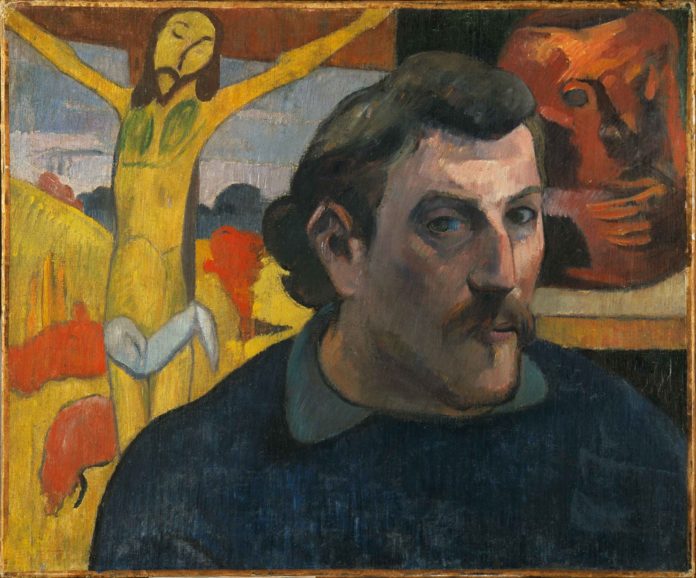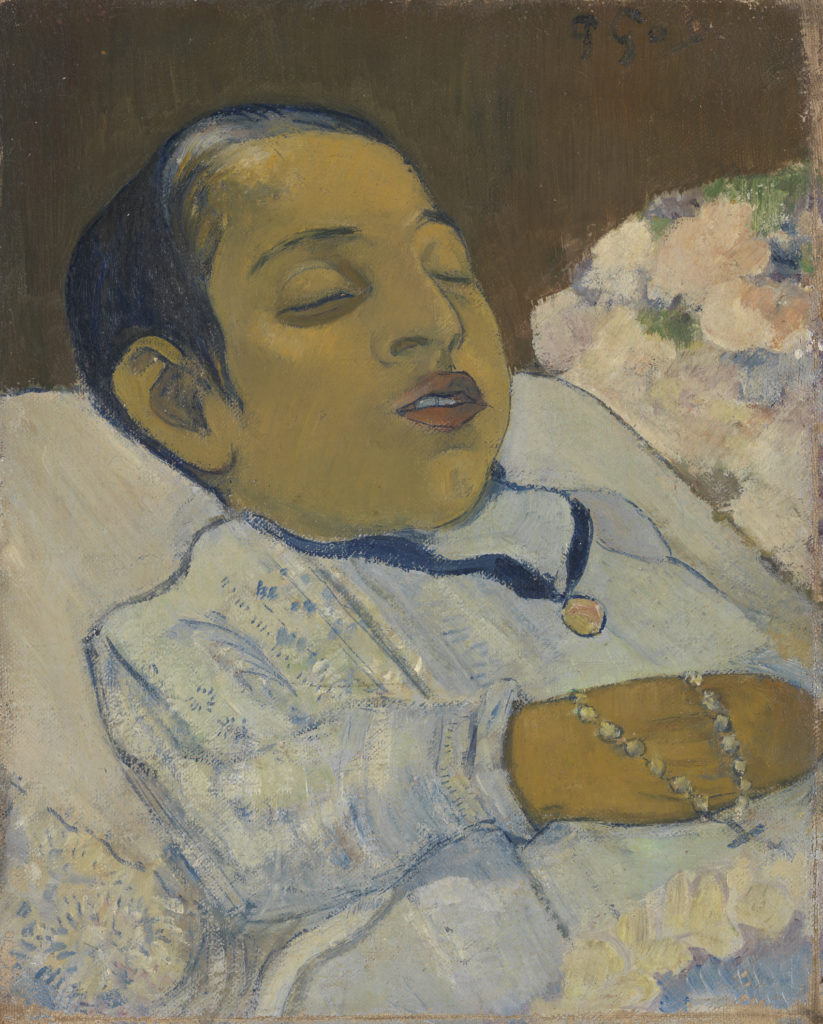
“The Credit Suisse Exhibition: Gauguin Portraits,” a landmark exhibition of major loans from museums and private collections throughout the world, will show how Gauguin used portraits primarily to express himself and his ideas about art.
More from the National Gallery:
Although he was fully aware of the Western portrait tradition, Gauguin was rarely interested in exploring his sitters’ social standing, personality, or family background, which had been among the main reasons for making portraits in the past.
From sculptures in ceramics and wood to paintings and drawings, an extraordinary range of media for a National Gallery exhibition, visitors will see how Gauguin interpreted a specific sitter or model over time, and often in different guises. A group of self-portraits in the exhibition will show, for example, how Gauguin created a range of personifications including his self-image as Jesus Christ. Together with his use of intense color and his interest in non-Western subject matter, his approach had a far-reaching influence on artists throughout the late 19th and 20th centuries, including Henri Matisse and Pablo Picasso.

“The Credit Suisse Exhibition: Gauguin Portraits” will show how the artist — inspired by his time spent in Brittany and French Polynesia from the mid-1880s to the end of his life in 1903 — became fascinated by societies that to him seemed close to nature. With their folktale heritage and spirituality, these communities appeared to him to be far removed from the industrialization of Paris.
Gauguin’s inspiration to visit French Polynesia was partly drawn from the exotic novels of Pierre Loti (whose naval training included a stay in Tahiti), his photographs of Borobudur sculptures, and Pacific exhibits he had seen at Paris’s Exposition Universelle in 1889. At the same time his own upbringing in Peru allowed him to think of himself as someone who stood outside the European tradition, a “savage,” while the European artistic and literary circles in which he moved also helped shape his views towards Tahiti and the Marquesas.

Gauguin’s life and art have increasingly come under scrutiny, especially the period he spent in South Polynesia. The Gallery aims to explore this controversial subject matter in the exhibition interpretation and accompanying program and to join conversations now taking place that consider Gauguin’s relationships and the impact of colonialism through the prisms of contemporary debate.
Featuring over 50 works, the exhibition includes paintings, sculptures, prints, and drawings, many of which have rarely been seen together. These include works from the Musée d’Orsay, Paris, France; the National Gallery of Art, Washington, DC, USA; the Art Institute of Chicago, USA; the National Gallery of Canada; the National Museum of Western Art, Tokyo, Japan; and the Royal Museums of Fine Arts of Belgium.
“The Credit Suisse Exhibition: Gauguin Portraits” is on view October 7, 2019, through January 26, 2020, at the National Gallery, London.
Sign up to receive Fine Art Today, the free weekly e-newsletter from
Fine Art Connoisseur magazine.







